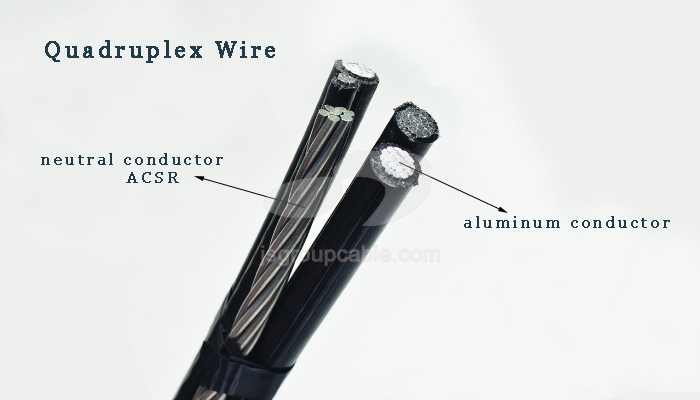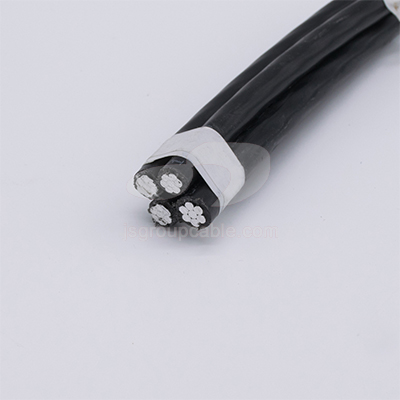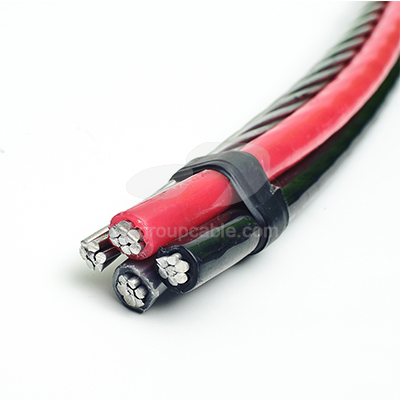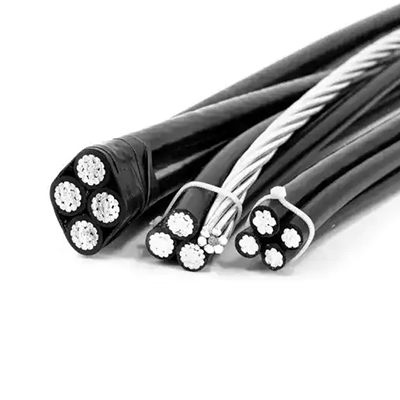- Offices Time:24 Hours Online
- Email:[email protected]
- WhatsApp:+8618339938759

Posted on March 2, 2023
Applications of Quadruplex wire
Quadruplex wire is a type of electrical cable that consists of four insulated conductors twisted together. It is commonly used in residential and commercial electrical wiring for overhead service drops, particularly for supplying power to homes and buildings in rural or remote areas. The four conductors are usually made of aluminum or copper, and each conductor is typically rated for a specific voltage and amperage. The insulation on the conductors provides protection against electrical hazards and helps to prevent the wires from touching each other. It is typically installed by trained electricians and is subject to local building codes and safety regulations.
Quadruplex wire is commonly used in residential and commercial electrical installations to supply power to homes and buildings in rural or remote areas. It is often used to connect a power source, such as a transformer, to a building’s electrical service entrance. The cable is typically installed by trained electricians and is subject to local building codes and safety regulations.
The four conductors are usually designated as ACSR conductors, which stands for “Aluminum Conductor Steel Reinforced.” This means that each conductor is made of a central steel core that is surrounded by layers of aluminum. The steel core provides added strength and durability to the conductor, while the aluminum layers provide electrical conductivity.
The use of quadruplex wire has several advantages over other types of electrical cables. It is often less expensive than underground cables, and it can be easier and quicker to install. It also requires less maintenance and can be more reliable in areas where underground cables are prone to damage from tree roots, digging, or other environmental factors.

Applications of Quadruplex wire
1.Overhead power transmission
It is often used for overhead power transmission in residential areas. It is commonly used to distribute power from a utility pole to the consumer’s home.
2.Telephone lines
Also be used for telephone lines, as it allows for multiple phone lines to be carried on a single cable.
3.Industrial and commercial applications
Quadruplex wire is often used in industrial and commercial applications that require high power transmission, such as mining and construction sites.
4.Marine applications
It is also used in marine applications, such as on boats and ships. It is ideal for use in harsh environments because it is designed to withstand extreme temperatures, moisture, and other environmental factors.
5.Temporary power
Can be used for temporary power supply, such as in outdoor events, festivals, and construction sites where temporary power is required.
6.Agricultural applications
For agricultural applications such as irrigation systems, electric fences, and other farm-related equipment.
7.Residential applications
Quadruplex wire is used in residential applications for supplying electricity to homes, outdoor lighting, and other electrical equipment in and around homes.

8.Renewable energy applications
Mostly used in renewable energy applications, such as solar panel systems, wind turbine systems and other renewable energy systems that require high power transmission.
9.Transportation applications
Also used in electric vehicles, buses, trains and other transportation applications that require high power transmission and durability.
10.Medical applications
It can also be used in medical applications such as surgical equipment, imaging machines, and other medical devices that require high power transmission and durability.
Laying method of Quadruplex wire
The laying method depends on the specific application and the environment in which it will be used. Here are some general guidelines for laying quadruplex wire:
1.Clear the area
Before laying, it is important to clear the area of any debris, rocks, or other materials that could damage the cable.
2.Determine the route
Determine the route of the cable, making sure to avoid any obstacles or hazards that could damage the wire or pose a safety risk.
3.Install supports
Install supports for the cable, such as poles or anchors, at regular intervals along the route.
4.Connect the cables
Use cable ties, clips, or other suitable accessories to connect the wires to the stand.
5.Bury the cable
If necessary, bury the quadruplex wire using a trenching machine or by hand. Make sure the cable is buried at the appropriate depth to prevent damage from external factors.
6.Protect the cable
Use conduit or other protective measures to prevent damage to the cable in areas where it is exposed to potential hazards.
7.Test the cable
After laying the cable, test it to ensure that it is properly installed and functioning as expected.

It is important to follow the manufacturer’s instructions and local codes and regulations when laying quadruplex wire to ensure that it is installed safely and correctly. Additionally, it is recommended to consult with a licensed electrician or professional installer for complex or large-scale installations.
How to choose quadruplex wire?
1.Voltage rating
Make sure the wire you choose has a voltage rating that is appropriate for your application. The voltage rating should be equal to or greater than the voltage of the system it will be used in.
2.Conductor size
Choose the appropriate conductor size for your application, based on the amount of current that will be flowing through the wire. A larger conductor size can handle more current and may be necessary for high-power applications.
3.Insulation type
Choose an insulation type that is appropriate for the environment in which the wire will be used. For example, if the wire will be exposed to extreme temperatures or moisture, choose an insulation type that can withstand these conditions.

4.Stranding
Consider the stranding of the quadruplex wire, which refers to the number of individual wires that make up each conductor. A higher stranding count can provide greater flexibility and durability.
5.Material
Choose a material that is appropriate for your application, such as copper or aluminum. Copper is a good choice for applications where conductivity is important, while aluminum is lighter and less expensive.
6.Code compliance
Make sure the wire you choose complies with local electrical codes and regulations.
It is important to consult with a licensed electrician or professional installer to ensure that you choose the appropriate quadruplex wire for your application. They can help you determine the appropriate voltage rating, conductor size, insulation type, stranding, and material based on your specific needs and requirements.
- Previous:What is triplex overhead wire?
- Next:How much is ACSR conductor?
Post categories
Most Popular Posts
-
The 136th Canton Fair welcomes you to participate!
October 12, 2024 -
High temperature cable introduction
July 26, 2024 -
Kenya Power and Energy Exhibition 2024
June 11, 2024 -
Introduction of rubber sheathed cable
June 5, 2024





